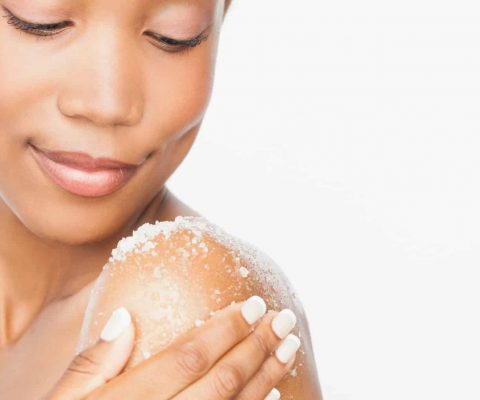Glycolic Acid Peel vs. Microdermabrasion
Disclosure: We use affiliate links and may receive a small commission on purchases.
 Glycolic Acid Peel vs. Microdermabrasion
thefitbay.com
Glycolic Acid Peel vs. Microdermabrasion
thefitbay.com
If you are one of the millions of people looking to improve the quality, texture, and overall appearance of your skin, you have likely heard of both glycolic acid peels and microdermabrasion. Two common skincare treatments, both of these can improve your skin, but are you aware of the differences between the two?
For many people, skincare treatments are luxury purchases and cannot be done on a regular basis. If that is your situation as well, it is incredibly important that you understand the differences between your treatment options to pick the one that will give you the results you are looking for. Even if you can easily afford regular skincare treatments, it is best to have a complete understanding of what it is you are doing to your skin.
To help make things easier, we are going to discuss both glycolic acid peels and microdermabrasion so you understand what each treatment entails, what they will do to your skin, average cost, and more. The better informed you are, the easier your decision will be when selecting the treatment you wish to try.
Glycolic Acid Peels
First off, let’s discuss what glycolic acid peels are. As the name suggests, this treatment involves applying a facial peel consisting of glycolic acid to the skin. The peel works to exfoliate and remove the surface layer of the skin. The glycolic acid is actually derived from sugarcane and works to breakdown the skin and remove it, leaving behind a fresh new layer of skin that is typically brighter, smoother and clearer.
Getting a glycolic acid peel is a fairly quick process – the peel is typically applied and stays on your face for around 10 to 15 minutes. However, the entire skin shedding process may take several days. Your skin will peel off in the days following your peel until the entire top layer has been removed. For this reason, a peel should not be done close to a major engagement or event. Rather, give yourself at least one week to heal from your peel.
People use a glycolic peel when they want a deep exfoliation of their skin. The peel can also help to open up your pores, making them more receptive to the absorption of moisturizers or other skin products that you use. You can either go to a dermatologist for a glycolic acid peel or purchase an at home peel.

One of the main differences with glycolic acid peels is the percentage of glycolic acid used. The higher percentage of acid used, the more powerful (and expensive) the peel will typically be. Typically, you will speak with the professional giving the peel to determine which percentage is right for you.
Price is another main difference, as there is a wide range that you will find. If you do not do the peel at home, you will find that acid peels will cost typically between $50 and $200. If you choose to do an at home treatment, the cost will be much cheaper. You can find at home peels for around $20. However, the percentage of glycolic acid may be lower and you will likely have to do the peel several times to get the results you want.
Microdermabrasion
Next up, microdermabrasion is another exfoliating treatment that typically uses a wand that applies a treatment to your face that is comprised of small crystals that will exfoliate your skin. Your skin does not peel like it does from a glycolic acid peel, but rather is scrubbed and exfoliated. For this reason, there is far less downtime from microdermabrasion, and this treatment can be done as close as a few hours before an engagement or event.
The process for getting a microdermabrasion is also fairly quick – it typically only takes 30 minutes to 1 hour to complete the process. Afterwards, you might have slightly pink skin, but that should fade fairly quick. You’ll be left with fresh, smooth, rejuvenated looking skin. Many people choose to have this procedure done every couple of weeks to see lasting results.

In addition to exfoliating the skin, microdermabrasion may also stimulate your skin’s production of collagen and elastin which will make it look more youthful and vibrant. From a cost perspective, microdermabrasion typically costs between $75 and $200. Just like with glycolic acid peels, you can also purchase an at home microdermabrasion treatment. This treatment is cheaper, typically costing between $60 and $100.
The Similarities
As you can tell, these two treatments are fairly similar in terms of their benefits. Overall, both are exfoliating treatments that are made to improve the appearance and texture of your skin. While this happens in different ways (a scrub feeling vs. an actual skin peel), the results tend to be fairly similar.
If you are suffering from dull skin, or have age or sun spots, these treatments will likely help you and give you more youthful looking skin.
Both treatments have relatively no downtime, although microdermabrasion is slightly quicker with no real downtime. With a glycolic peel, you will want to wait up to a week for the full peel to take place. However, in terms of bed rest or missing work, you will not experience that with either of these treatments.
From a cost perspective, both are fairly pricey skin care treatments. If you go and have the treatments done at a spa or doctor’s office, they both will likely run you between $100 and $200 dollars. There are at-home treatment options, but they may be less effective. Finally, most people feel both treatments need to be repeated every few weeks to experience true results.
Making the Right Choice
When you go to make your decision, think about specific benefits you are looking for. If you are specifically trying to remove dark spots or rough patches of skin, you are likely a great candidate for a glycolic acid peel. If you want to target fine lines and wrinkles and even acne scarring, consider microdermabrasion. Either way, you will find that these treatments will leave you with beautiful, glowing skin. If you are able to, repeat every couple of weeks for maximum results. Your skin will look better in no time!










